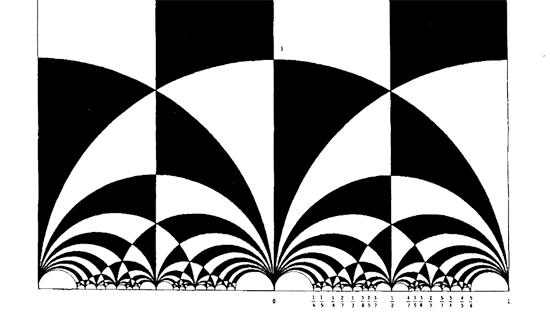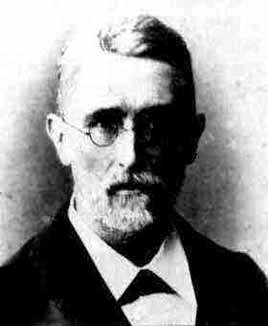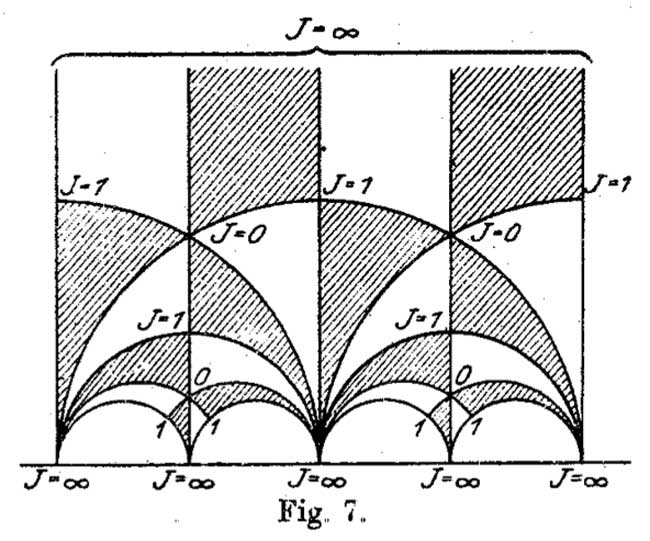Exactly one year ago this blog was briefly renamed MoonshineMath. The concept being that it would focus on the mathematics surrounding the monster group & moonshine. Well, I got as far as the Mathieu groups…
After a couple of months, I changed the name back to neverendingbooks because I needed the freedom to post on any topic I wanted. I know some people preferred the name MoonshineMath, but so be it, anyone’s free to borrow that name for his/her own blog.
Today it’s bloomsday again, and, as I’m a cyclical guy, I have another idea for a conceptual blog : the bistromath chronicles (or something along this line).
Here’s the relevant section from the Hitchhikers guide
Bistromathics itself is simply a revolutionary new way of understanding the behavior of numbers. …
Numbers written on restaurant checks within the confines of restaurants do not follow the same mathematical laws as numbers written on any other pieces of paper in any other parts of the Universe.
This single statement took the scientific world by storm. It completely revolutionized it.So many mathematical conferences got hold in such good restaurants that many of the finest minds of a generation died of obesity and heart failure and the science of math was put back by years.
Right, so what’s the idea? Well, on numerous occasions Ive stated that any math-blog can only survive as a group-blog. I did approach a lot of people directly, but, as you have noticed, without too much success… Most of them couldnt see themselves contributing to a blog for one of these reasons : it costs too much energy and/or it’s way too inefficient. They say : career-wise there are far cleverer ways to spend my energy than to write a blog. And… there’s no way I can argue against this.
Whence plan B : set up a group-blog for a fixed amount of time (say one year), expect contributors to write one or two series of about 4 posts on their chosen topic, re-edit the better series afterwards and turn them into a book.
But, in order to make a coherent book proposal out of blog-post-series, they’d better center around a common theme, whence the BistroMath ploy. Imagine that some of these forgotten “restaurant-check-notes” are discovered, decoded and explained. Apart from the mathematics, one is free to invent new recepies or add descriptions of restaurants with some mathematical history, etc. etc.
One possible scenario (but I’m sure you will have much better ideas) : part of the knotation is found on a restaurant-check of some Italian restaurant. This allow to explain Conway’s theory of rational tangles, give the perfect way to cook spaghetti to experiment with tangles and tell the history of Manin’s Italian restaurant in Bonn where (it is rumoured) the 1998 Fields medals were decided…
But then, there is no limit to your imagination as long as it somewhat fits within the framework. For example, I’d love to read the transcripts of a chat-session in SecondLife between Dedekind and Conway on the construction of real numbers… I hope you get the drift.
I’m not going to rename neverendingbooks again, but am willing to set up the BistroMath blog provided
- Five to ten people are interested to participate
- At least one book-editor shows an interest
update : (16/06) contacted by first publisher
You can leave a comment or, if you prefer, contact me via email (if you’re human you will have no problem getting my address…).
Clearly, people already blogging are invited and are allowed to cross-post (in fact, that’s what I will do if it ever gets so far). Finally, if you are not willing to contribute blog-posts but like the idea and are willing to contribute to it in any other way, we are still auditioning for chanting monks
The small group of monks who had taken up hanging around the major research institutes singing strange chants to the effect that the Universe was only a figment of its own imagination were eventually given a street theater grant and went away.
And, if you do not like this idea, there will be another bloomsday-idea next year…
Leave a Comment The black&white psychedelic picture on the left of a tessellation of the hyperbolic upper-halfplane, was called the Dedekind tessellation in
The black&white psychedelic picture on the left of a tessellation of the hyperbolic upper-halfplane, was called the Dedekind tessellation in  Stillwell refers to
Stillwell refers to 

